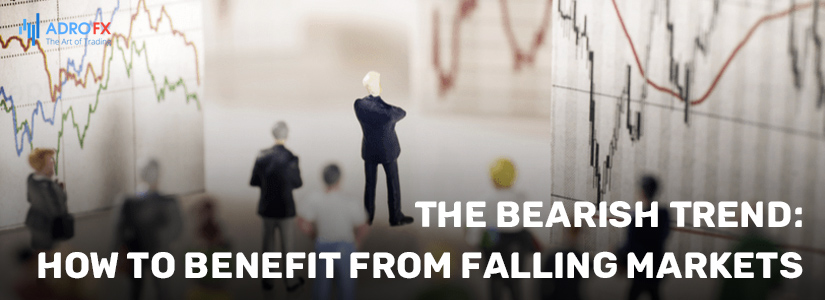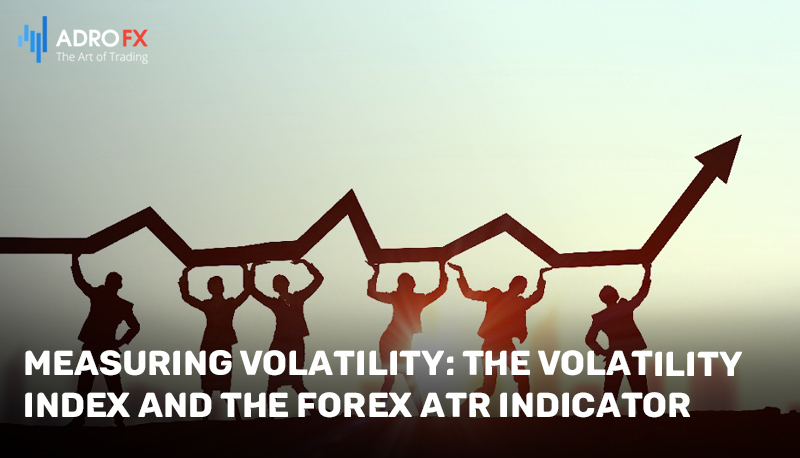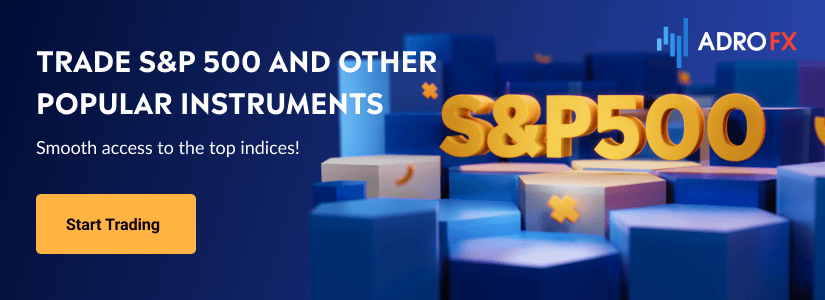Volatility: A Comprehensive Guide to Trading Volatile Currency Pairs

Volatility in the currency market refers to the degree of price movements within a specific timeframe. It plays a crucial role in shaping trading opportunities and risk management strategies for traders. Understanding volatility and its measurement is vital for navigating the ever-changing forex market. This article explores the concept of volatility, its measurement using indicators like the Average True Range (ATR), and provides insights into the most volatile currency pairs. Additionally, we will cover some valuable tips for effectively trading volatile currency pairs while managing the associated risks.
What Is Volatility?
Volatility refers to the extent of price movements within a specific time period. In simpler terms, a more volatile market experiences frequent price fluctuations compared to a less volatile one. When discussing volatility, we primarily focus on two types of price movements: proportional and absolute.
Proportional volatility is particularly useful for making comparisons, while absolute volatility is often relevant when analyzing currencies. Traders may want to know the typical pip movement for a given period, and in this case, it is beneficial to discuss volatility in absolute terms. For the purpose of the following comparison, we will examine the number of pips each currency moves.

Measuring Volatility: The Volatility Index and the Forex ATR Indicator
Various methods exist for measuring volatility, but one well-known indicator is the Average True Range (ATR). J. Welles Wilder, a renowned commodity trader, developed the ATR indicator as part of his book "New Concepts in Technical Trading." Initially designed for commodity markets, it has also become relevant for other financial markets such as forex.
In commodity markets, there is often a time gap between market closing and reopening, leading to potential price "gaps" upon opening. Gapping refers to opening at a different level compared to the previous day's closing price. While the forex market trades 24 hours a day during the week and is less prone to such gaps, it may still be relevant when the forex market reopens after the weekend.
This poses a challenge to the simplest method of measuring volatility, which involves examining the range between the high and low prices within a specific period. What happens if the previous closing price falls outside that range?
Here's where the true range comes into play. The true range accounts for such circumstances and is calculated as the largest of the following values:
- High of the current period minus low of the current period;
- High of the current period minus close of the previous period;
- Low of the current period minus close of the previous period.
Note that the true range is always a positive value. If the calculations yield a negative value, we ignore the minus sign. The reason for this is that when considering volatility, we are only concerned with the magnitude of change, not its direction. Once we have the true range values, we use them to derive the ATR. The ATR is an Exponential Moving Average (EMA) of the true range. The good news is that ATR is a standard indicator available in most trading platforms:

Most Volatile Currency Pairs
The volatility of currency pairs can vary based on various factors such as economic conditions, geopolitical events, interest rates, and market sentiment. While currency volatility can change over time, historically, the following currency pairs have been known to exhibit higher levels of volatility:
- GBP/JPY (British Pound/Japanese Yen): This currency pair is known for its high volatility due to the relatively large interest rate differential between the two currencies and their sensitivity to global economic trends;
- EUR/JPY (Euro/Japanese Yen): Similar to GBP/JPY, EUR/JPY experiences high volatility as it combines the volatility of the Eurozone economy with the sensitivity of the Japanese Yen to risk sentiment;
- AUD/JPY (Australian Dollar/Japanese Yen): The Australian Dollar and the Japanese Yen are both considered higher-yielding currencies, which can lead to increased volatility in their pairing;
- USD/TRY (US Dollar/Turkish Lira): The Turkish Lira has been known for its significant volatility due to economic and political uncertainties in Turkey. This can create substantial price swings in the USD/TRY currency pair;
- USD/ZAR (US Dollar/South African Rand): The South African Rand is influenced by commodity prices, political factors, and global investor sentiment. These factors can contribute to high volatility in the USD/ZAR pair.
It's important to note that currency volatility can change over time, and it's always advisable to stay updated with current market conditions and consult reliable sources for the most up-to-date information.
Why Is Currency Volatility Important?
Currency volatility holds significance for traders due to its ability to provide insights into future market movements based on historical data. It aids in developing a probabilistic approach to trading, focusing on overall probabilities of success for strategies in the long run, rather than making specific predictions about the future.
Traders are advised to:
- Avoid attempting to predict the future with certainty;
- Assess the probabilities of success for their strategies over the long term.
Naturally, traders might wonder if there is a way to anticipate periods of higher volatility. Indeed, one tool used by traders is the Forex Calendar. By observing how volatility increases when specific economic reports are released, traders can gauge which data releases tend to significantly impact the market. For instance, the US Bureau of Labor Statistics regularly publishes employment data on the first Friday of each month, which historically has led to significant movements in various markets, including forex.
However, volatility patterns may also exist throughout the trading week, and traders may wish to study these patterns to understand how volatility fluctuates. A guide on the best trading days per week in forex can provide further insights into this aspect.
Other Ways Volatility Impacts Trading
Volatility can be utilized in several ways to guide trading decisions. One such application involves adjusting the level of risk based on the measured volatility, aiming to normalize the risk taken with each trade. This adjustment involves scaling the trading size, making it proportionate to the market's volatility.
In simple terms:
- More volatile currency pairs warrant smaller contract sizes;
- Less volatile currency pairs allow for larger contract sizes.
This approach aims to mitigate the impact of volatility on trading outcomes. But why is it necessary?
Consider a scenario where the same trading strategy is applied across multiple forex pairs. It is reasonable to expect that each position carries an equal chance of winning or losing, assuming the strategy is consistently successful in the long run. However, the balance between winning and losing trades is crucial. It is vital to prevent losing trades from overshadowing the gains. Failure to adjust the contract size appropriately for a more volatile currency pair can result in a significant loss that outweighs the winning trades. Therefore, volatility measurement helps manage risk effectively.
Moreover, volatility also assists in selecting the most suitable market for one's trading style. Long-term trend followers may prefer less volatile currency pairs because highly volatile markets can make it challenging to sustain a long-term trend. Sharp price reversals and fluctuations can erode returns gained from holding positions. On the contrary, swing traders often seek more volatile currency pairs as they provide greater price swings and potential opportunities for shorter-term trades.
Tips For Trading Volatile Currency Pairs
Trading volatile currency pairs can be challenging but also offers numerous earnings opportunities. Here are some tips to consider when trading volatile currency pairs:
- Understand the factors driving volatility: Stay informed about the economic, political, and geopolitical factors affecting the currencies in the pair. Keep track of news releases, central bank announcements, and other events that could impact the currency pair's volatility.
- Use a suitable trading strategy: Volatile currency pairs require robust trading strategies. Consider using strategies that are designed for high volatility, such as breakout trading, momentum trading, or volatility-based indicators like Bollinger Bands or Average True Range (ATR).
- Implement risk management: Volatility can lead to significant price swings, which can result in larger potential gains but also larger potential losses. Implementing proper risk management is crucial. Set appropriate stop-loss orders to limit potential losses and use position-sizing techniques to manage risk effectively.
- Be cautious with leverage: Volatile currency pairs may tempt traders to use higher leverage to amplify potential gains. However, increased leverage also magnifies the risk. Be cautious when using leverage and ensure that you have a clear understanding of its implications on your trading account.
- Monitor technical indicators: Technical analysis can be valuable when trading volatile currency pairs. Monitor key technical indicators such as support and resistance levels, moving averages, and trendlines to identify potential entry and exit points. Additionally, use oscillators like the Relative Strength Index (RSI) or Stochastic to gauge overbought or oversold conditions.
- Consider trading during active market sessions: Volatility tends to be higher during active market sessions when multiple financial centers are open. For example, the overlap between the European and American sessions can result in increased volatility for currency pairs involving the euro and the U.S. dollar.
- Practice with a demo account: Practice with a demo account: If you're new to trading volatile currency pairs, consider practicing with a demo account to gain experience and test different strategies without risking real cash. This allows you to familiarize yourself with the pair's behavior and develop confidence in your trading approach.
Remember that trading volatile currency pairs involves higher risks, and it's essential to continuously educate yourself, stay updated with market conditions, and adapt your trading strategies as needed.
Conclusion
Volatility is an essential aspect of the forex market that traders must understand and adapt to in order to succeed. Measuring volatility through indicators like the ATR allows traders to gauge price fluctuations and adjust their strategies accordingly. By identifying the most volatile currency pairs, traders can focus on opportunities that align with their trading styles. However, trading volatile currency pairs requires careful risk management and the application of suitable trading strategies. Monitoring market conditions, technical indicators, and practicing with a demo account are essential steps for traders to navigate the challenges and potential rewards of trading volatile currency pairs. With a disciplined approach and continuous learning, traders can harness the opportunities presented by volatility in the forex market.
About AdroFx
Established in 2018, AdroFx is known for its high technology and its ability to deliver high-quality brokerage services in more than 200 countries around the world. AdroFx makes every effort to keep its customers satisfied and to meet all the trading needs of any trader. With the five types of trading accounts, we have all it takes to fit any traders` needs and styles. The company provides access to 115+ trading instruments, including currencies, metals, stocks, and cryptocurrencies, which make it possible to make the most out of trading on the financial markets. Considering all the above, AdroFx is the perfect variant for anyone who doesn't settle for less than the best.










